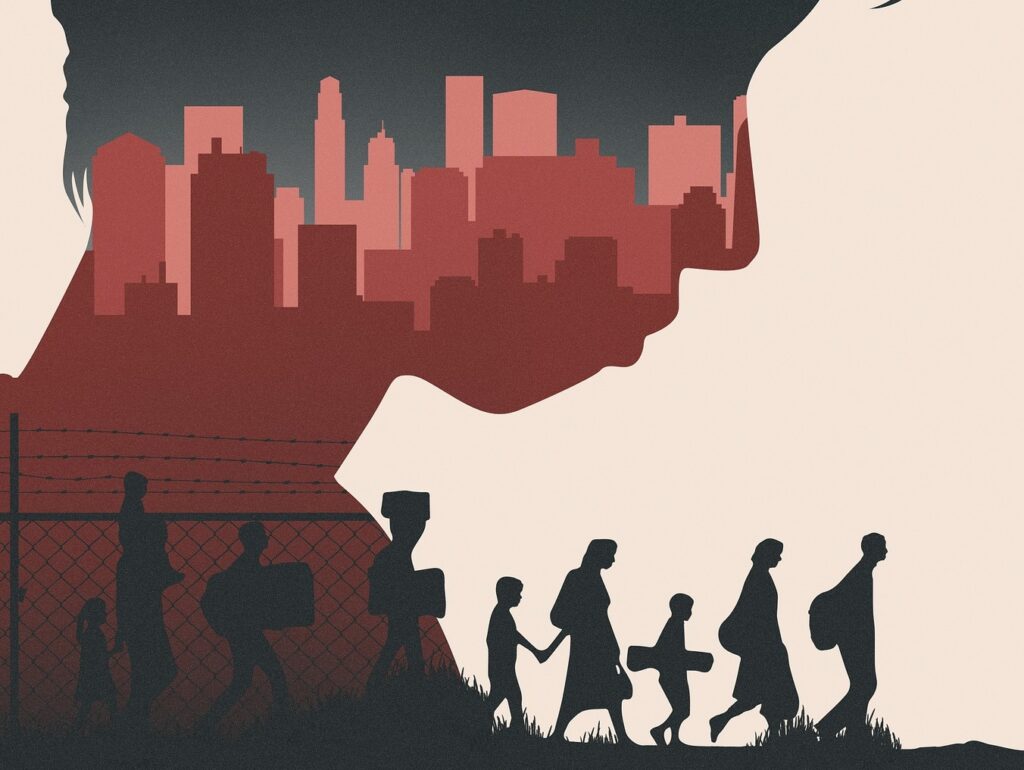
Human migration is defined as the movement of people from one location to another with the intention of settling permanently or temporarily. There are two types of migration – Internal and External migration. Internal migration is common in many countries as people move for better economic opportunities usually from small towns to big cities. External migration is when an individual or a group move from one country to another. Moving within a country can be hassle-free and less judgmental but when it comes to cross-border migrations, matters are viewed through a different lens.
First, let’s look at the major reasons for migration.
Economic opportunities: Many people migrate in search of better economic opportunities, such as higher-paying jobs, better working conditions, or more stable employment. This was particularly true for people living in developing countries, where economic conditions may be more challenging.
Conflict and persecution: Political instability, conflict, and persecution were major drivers of migration in the past decade.
Environmental factors: Natural disasters also contributed to human migration. Drought, and extreme weather events such as hurricanes and wildfires forced many people to leave their homes in search of safer and more stable living conditions.
Family reunification: Many people also migrate in order to reunite with family members who live in other countries. This was particularly true for migrants from Central and South America who sought to reunite with family members in the United States.
Immigration can affect the host country both positively and negatively effects.
Positive effects of immigration are,
Economic growth: Immigration can stimulate economic growth by increasing the labor force, creating jobs, and boosting productivity. Immigrants often fill gaps in the labor market and bring skills and knowledge that contribute to innovation and entrepreneurship.
Cultural diversity: Immigration can enrich the host country’s cultural fabric by bringing in new perspectives, traditions, and experiences. This can lead to a more diverse and tolerant society.
Social cohesion: Contrary to popular belief, immigration can actually improve social cohesion in the host country by promoting intercultural exchange and reducing prejudice and discrimination.
Negative effects of immigration are,
Pressure on public services: Immigration can put pressure on public services such as healthcare, education, and housing. If the host country is not prepared to accommodate the influx of new residents, this can lead to strains on the system and resentment among the population.
Job competition: Some people may feel that immigrants are taking jobs away from native-born workers. This can lead to tension and animosity between the two groups.
Social unrest: If immigration is not managed properly, it can lead to social unrest and political instability. This is particularly true if immigrants are perceived as a threat to the host country’s national identity or security.
Overall, the impact of immigration on the host country is complex and depends on a variety of factors such as the size and composition of the immigrant population, the policies in place to manage immigration, and the social and economic context of the host country.
Countries that have accepted the most immigrants are,
United States: The United States has the largest number of immigrants in the world, with over 44 million foreign-born residents as of 2019.
Germany: Germany has accepted a large number of migrants in recent years, particularly from Syria and other conflict zones in the Middle East.
Canada: Canada has a reputation as a welcoming country for immigrants, with a relatively liberal immigration policy and a diverse population.
Australia: Australia has a long history of immigration, and has accepted large numbers of immigrants from a variety of countries in recent years.
United Kingdom: The United Kingdom has accepted a significant number of migrants in recent years, particularly from other European Union countries.
France: France has a large immigrant population, particularly from North and West Africa.
Spain: Spain has seen a large influx of migrants in recent years, particularly from North Africa and Latin America.
Italy: Italy has accepted a significant number of migrants in recent years, particularly from North Africa and the Middle East.
It is no coincidence that the major economies are at the top of the list as laws in favor of immigration have helped attract talent from around the world. The increased competition and cross-cultural views have also helped their people progress to new ideas of thought and innovations.






